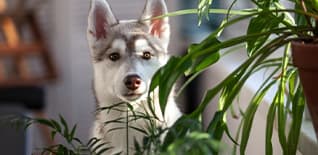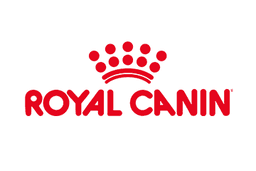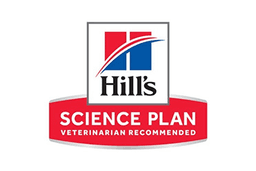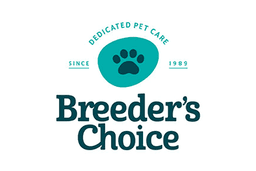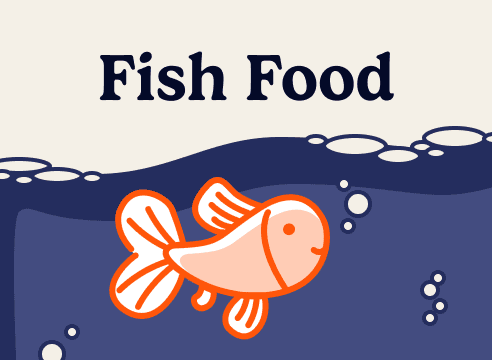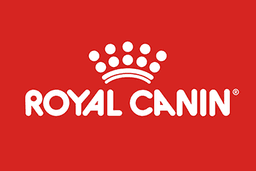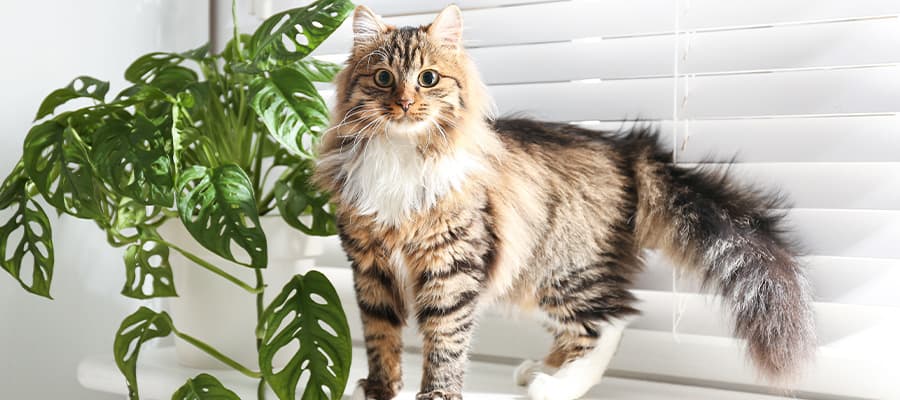As a cat parent, you're well aware that your whiskered wonder's curiosity knows no bounds. From the highest shelves to the smallest nooks, nothing is off-limits for your feline explorer—including your beloved plants.
But are you aware that some of these leafy greens could be hazardous to your kitty?
To help maintain a safe haven for your adventurous companion, here’s our guide to choosing the right plants for your indoor space.
Indoor Plants that are Toxic to Cats and Cat Safe Alternatives
1. Peace Lily
Toxicity: Mild/Moderate
Known for its shade tolerance and beautiful white flowers, the Peace Lily can cause severe irritation in the mouth, tongue, and lips of cats, which may result in drooling, excessive licking, and vomiting.
Safer alternative:
The Cast Iron Plant, another hardy option with a similar appearance.
2. Swiss Cheese Plant (Monstera Adansonii)
Toxicity: Moderate
Famous for its unique, holey leaves, this plant can also cause oral irritation and difficulty swallowing in cats. Unfortunately, other types of Monstera aren't cat-friendly either.
Safer alternative:
A Boston Fern thrives in high humidity and indirect light, perfect for the bathroom. Other safer ferns include Bird’s Nest, Staghorn, and Maiden's Hair.
3. Heartleaf Philodendron
Toxicity: Mild/Moderate
This easy-care, trailing vine is unfortunately toxic, causing swelling and pain if ingested.
Safer alternative:
For another trailing plant try the String of Hearts
4. Pink Arrowhead
Toxicity: Moderate
Admired for its heart-shaped leaves and vibrant pink hues, the Pink Arrowhead can cause pain and swelling of the mouth, excessive drooling, and vomiting.
Safer alternative:
The Polka Dot Plant/Freckle Face (Hypoestes) offers the same pop of pink
5. Jade Plant
Toxicity: Mild/Moderate
This money plant is often praised for its succulent, rubbery leaves but is toxic to cats, causing vomiting and lethargy.
Safer alternative:
The Chinese Money Plant (Pilea Peperomioides) with coin-shaped leaves.
6. Devil’s Ivy (Golden Pothos)
Toxicity: Moderate
A hardy plant ideal for beginners, but its leaves contain toxins that can irritate your cat’s mouth and stomach.
Safer alternative:
The Hoya (Wax Plant) is a great climbing option
7. Fiddle Leaf Fig
Toxicity: Mild/Moderate
Known for its large, glossy leaves, the Fiddle Leaf Fig can cause irritation to the mouth and stomach, leading to drooling and vomiting.
Safer alternative:
For those into high-maintenance plants, Calathea varieties such as the Prayer Plant, Rattlesnake, Peacock, and Medallion are safer choices.
8. Snake Plant
Toxicity: Mild/Moderate
Also known as Mother-in-Law's Tongue, it's favoured for low-light environments but causes nausea, vomiting, and diarrhoea if ingested.
Safer alternative:
Air Plants thrive in similar conditions without the toxicity.
9. English Ivy
Toxicity: Moderate/High
Popular for its draping vines, it can cause abdominal pain, vomiting, and hypersalivation.
Safer alternative:
For a similar white and green appearance, try a Spider Plant. They also look great hanging in a basket.
10. Painted Leaf Begonia
Toxicity: Moderate
Though common indoors and out, all Begonias contain oxalates that can severely irritate cats.
Safer alternative:
Watermelon Peperomia offers similar lush, decorative leaves without the risk.
11. Sago Palm
Toxicity: Highly Toxic
Every part of this ornamental palm is extremely toxic, potentially causing liver failure and death in cats.
Safer alternative:
Parlor Palms also enjoys low light and add elegance. Other safer palms include Kentia and Bamboo.
12. Aloe Vera
Toxicity: Mild/Moderate
While medicinal for humans, Aloe Vera can cause vomiting, diarrhea, depression, lethargy, and changes in urine colour in cats.
Safer alternative:
The Zebra Plant (Haworthia) offers a similar shape and size with a striking appearance.
13. Bird of Paradise
Toxicity: Mild/Moderate
Recognisable by its large, exotic leaves and bright, crane-like flowers, the Bird of Paradise is a stunning addition to any indoor space. However, it can cause mild nausea, vomiting, and drowsiness in cats if ingested.
Safer alternative:
For the same tropical feel, a Banana Plant is ideal. If you're after some colour, try a Bromeliad, which is equally vibrant and safer for pets.
14. Lilies (Lilium spp. and Hemerocallis spp.)
Toxicity: Highly Toxic
Lilies, although beautiful as table centrepieces, are fatal to cats. All parts of the plant can cause kidney failure and death.
Safer alternative:
Moth Orchids are a safer choice available at florists.
It's important to keep in mind that while there are safer alternatives, if your cat does decide to make your plant their next meal it can still cause mild symptoms
How Do I Keep My Cat Away From My Plants?
To prevent your cat from eating your plants, focus on providing plenty of alternatives and enrichment. Offer your cat engaging toys and safe chewing options like cat grass. Increase daily stimulation with interactive play and ensure they have access to stimulating activities like puzzle feeders or window perches. Use positive reinforcement by rewarding your cat when they play with their toys instead of the plants. Lastly, consider placing your plants out of reach or using protective barriers around them. These strategies keep your cat entertained and redirect their attention away from your plants.
What if My Cat Eats a Toxic Plant?
If you suspect your cat has ingested a toxic plant, acting quickly is crucial. Here's what you should do:
1. Gather Vital Information - Be ready to inform the vet about your cat's breed, age, sex, and weight. Note the type of plant ingested, the amount, and the time since exposure. Also, describe any symptoms your cat is displaying.
2. Call Your Vet Immediately - Contact your veterinarian as soon as possible. Providing the information upfront allows the vet clinic to prepare for your arrival, which can save precious time.
3. Do Not Induce Vomiting - Never try to induce vomiting unless explicitly instructed by a vet.
Treatment for poisoning generally involves supportive care rather than a specific antidote. Vets may administer treatments like fluids to manage shock, respiratory support, and medications to control seizures. In some cases, if deemed safe, the vet might induce vomiting or perform gastric lavage to remove the toxins. Quick and informed action can make a significant difference in the outcome for your pet.
With this guide on indoor plants, you and your cat can now be at one with nature
